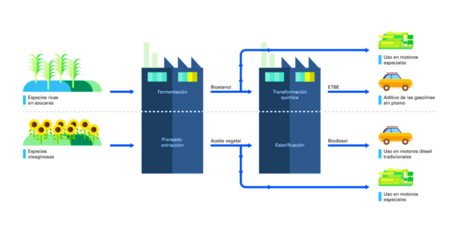
Full Time Professor
Bioingineering and Chemical Engineering Department
This article is inspired by the book report: “New Directions for Chemical Engineering” (2022) edited by the National Academy of Sciences, Engineering and Medicine of the United States (1).
This approximately 300-page document has generated enthusiasm and expectation among industry professionals internationally and represents an updated consensus of actors in the area, from academia, public and private institutions and industry. Its publication aimed to revive the profession of Chemical Engineering, as a cutting-edge area for the application of science and technology and, outline a futuristic vision for its transformation, presenting various emerging trends and opportunities for action. In this article, I share the highlights of the report regarding areas of development and its impact on the professional practice of Chemical Engineering for the coming years. I hope you find it useful:

- Sustainable Processes and Materials: The manufacturing industry is under pressure to design and improve processes that minimize environmental impact by adopting the principles of circular economy and optimization in the use of resources. Chemical engineers are at the forefront of developing innovative technologies and promoting the use of renewable energy through their systemic view of processes.
- Digital Transformation: The integration of digital tools, automation and the application of artificial intelligence (with critical thinking) promises to improve productivity, as well as promoting industrial safety and creating new opportunities for growth in industry.
- Biotechnology and Biochemical Engineering: Another key area, the convergence of biology and chemical engineering offers exciting possibilities for the production of sustainable fuels, pharmaceuticals, biomaterials and bioremediation that will revolutionize various sectors, including energy, health and environmental care. From the application of genetic engineering (with responsibility) to promote increased production to the use of biomass as raw material in systems parallel to those of oil refineries, Chemical engineers are entering new frontiers of scale applied to biotechnological processes.
- Multi-scale modeling and simulation: Computational modeling and simulation allow engineers to make connections between molecular-level interactions and macroscopic phenomena. Progress in both areas also allows for a better understanding of complex systems. The integration of modeling and simulation at multiple scales will undoubtedly lead to advances in areas such as drug discovery, the design of new materials and more efficient forms of energy storage.

In short, there is a clear signal in the paradigm shift for chemical engineering performance. By embracing sustainability, digitization, biotechnology and multi-scale modeling, the doors open to a world of unlimited possibilities for multi- and interdisciplinary interaction. Chemical engineers and professionals from related careers will play a key role in developing innovative solutions to global challenges and shaping tomorrow’s more sustainable, efficient and balanced industries for all.
References
- National Academies of Sciences, Engineering, and Medicine. 2022. New Directions for Chemical Engineering. Washington, DC: The National Academies Press. https://doi.org/10.17226/26342.




